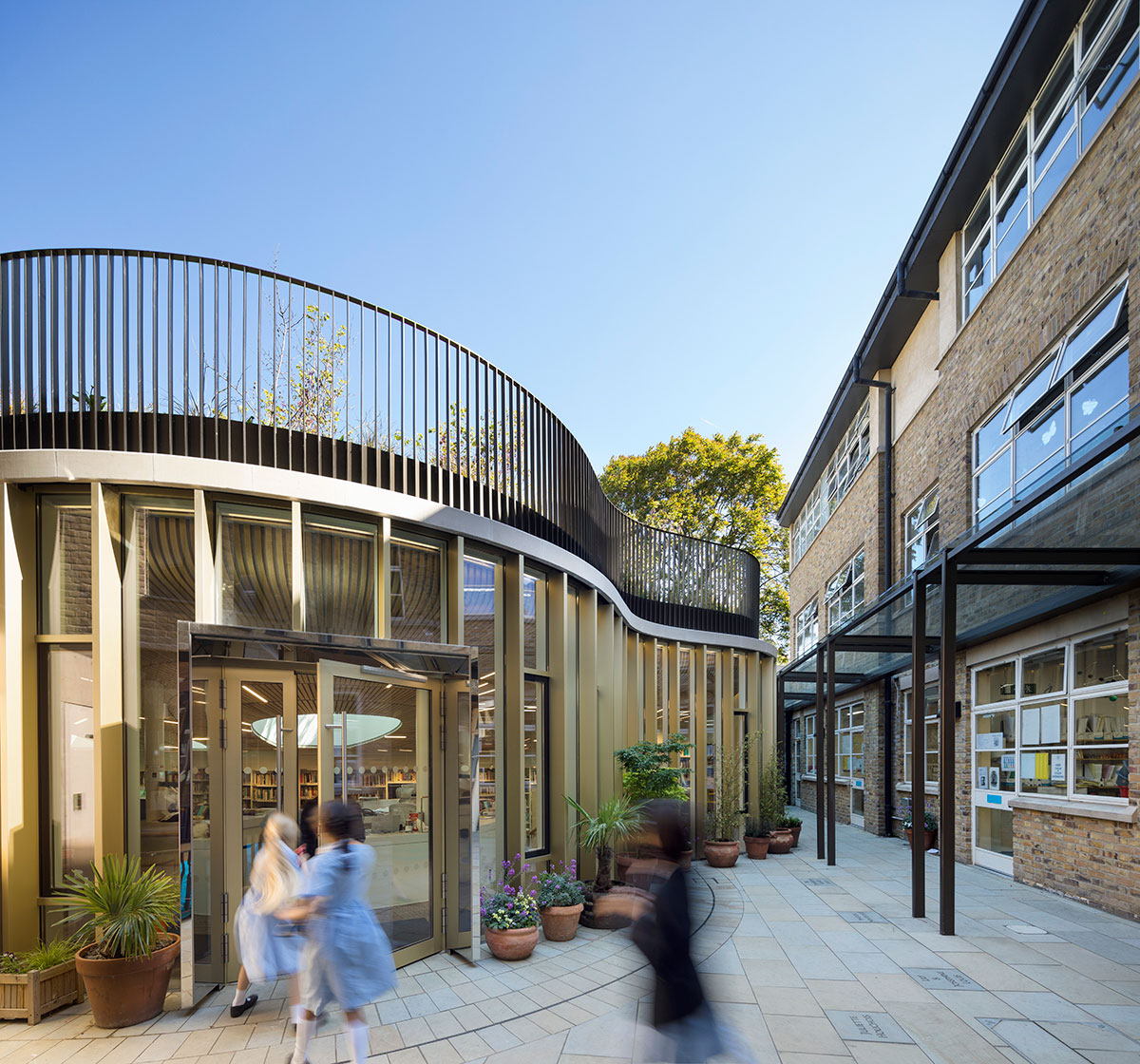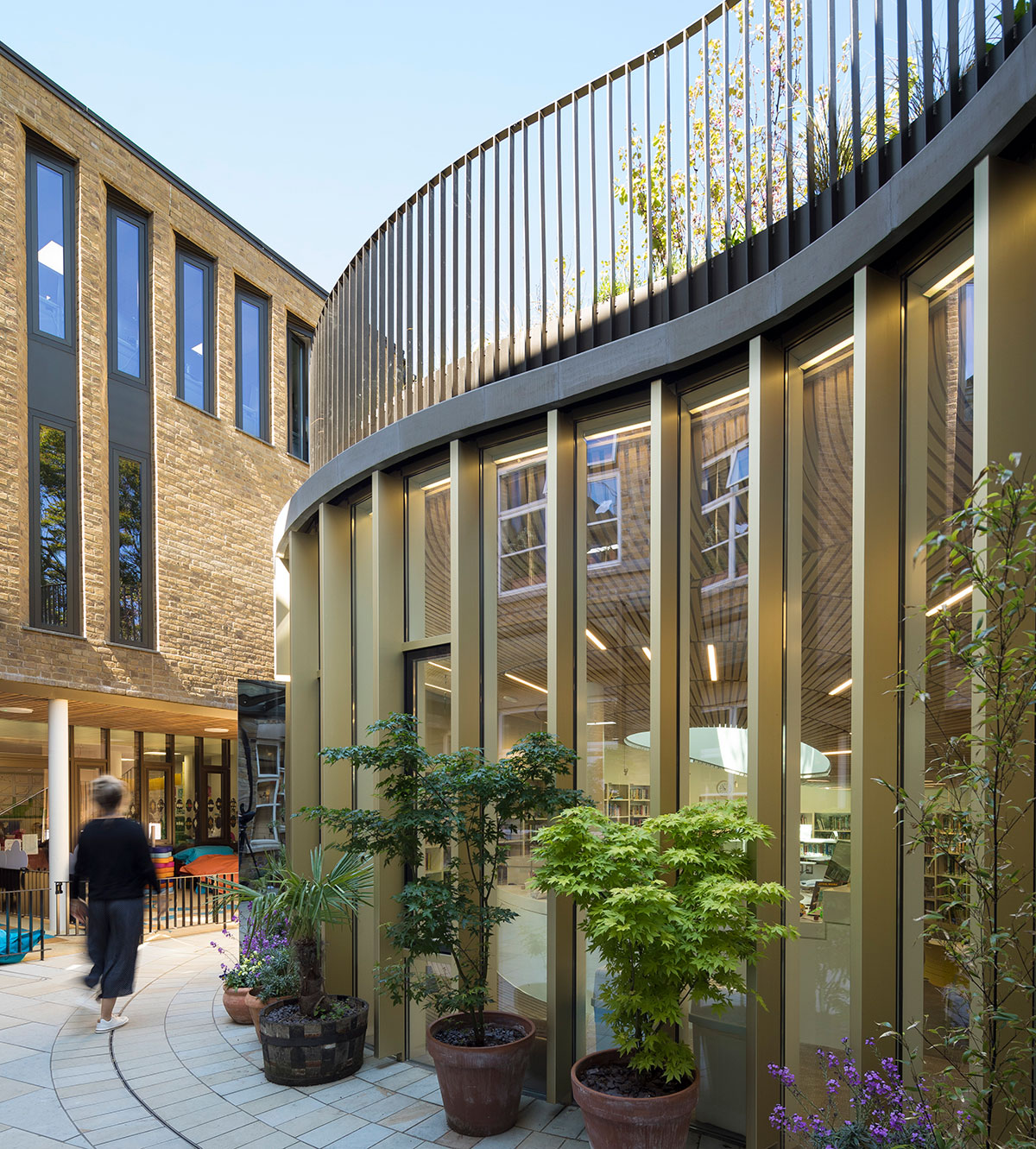#{Title}
#{Copy}

Robyn Poulson explains how the award winning Centre for Creative Learning at Francis Holland School maximises space, and takes the curriculum outdoors to encourage engagement with nature for a beneficial impact on learning, development and creativity.
Creativity and imagination is the prerequisite of the architecture profession, sometimes conceptualising fictitious worlds in distant futures. However, I don’t think any of us could have imagined the situation this world finds itself in today. Cities are adapting to the coronavirus pandemic and life as we know it is rapidly changing.
The challenges associated with managing the Covid-19 pandemic compounded in the education sector, when children went back to school, earlier this year.
As problem solvers we consistently look at how best to meet these challenges head on. Our designs aim to provide a multitude of solutions both in the short term and for years to come. With schools in particular, we recognise that now more than ever before, the use of outdoor learning spaces has clear and definitive benefits to teachers and pupils alike.
Professor Helen Bilton from the Institute of Education at the University of Reading explains: “Teaching and learning are not the sole prerogative of the indoor environment. The benefits of using outdoor classrooms are numerous. As space in many city-based schools is at a premium, taking pupils out of the indoor classroom increases the amount of space available to staff and children and enables teachers to develop more practical methods of learning.”
Of course, early years teaching has often utilised outdoor learning spaces but there is fresh opportunity for secondary schools to design outdoor classrooms that support engaging curriculums and create health-enhancing environments for pupils. Research by Swansea University shows that when learning outdoors, pupils feel a sense of freedom, are more able to express themselves, and enjoy being able to move about. Similarly teachers find it easier to explore a different approach to their lessons and suggest that outdoor learning helps them to engage all ages and types of learners. They also feel that children have a right to be outdoors – especially at a time when their opportunities to access the natural environment may have been limited during lockdown.

Take our project at the Francis Holland School in Sloane Square, London, which recently won the New London Architecture award for Wellbeing. The pupils were among some of the first to return to school following the national lockdown. Naturally there would have been both anxieties about the process and concerns about health and the learning environments.
Fortunately, we have been working with the school to develop a masterplan to create new innovative learning spaces. The latest of which is its new Centre for Creative Learning which was designed to provide space to allow the exploration of ideas and teaching outside of the classroom.
The school’s estate had grown organically over a period of 150 years and the scarcity of additional land resulted in the marginalisation of social learning and green play areas. In recent years, the all-girls school has strived to promote wellness, extra-curricular activities and exploration of ideas through experimentation and discussion.
The Centre for Creative Learning incorporates a new library sheltered by a lush, undulating roof garden, featuring a water feature, bug hotel, sloped lawn and an edible garden. The schoolgirls, who are aged between 4 and 18, can enjoy the tranquil, biodiverse rooftop and are encouraged to use the space to speak to Place2Be counsellors and explore and understand nature. It also provides opportunities for independent study and group work and provides a distinctive and comfortable area for pupils to sit and read.
Looking at the wider design the scheme knits into its rich context. The rooftop reflects Chelsea’s long association with gardens, provides a green outlook for surrounding residences and offers the school opportunities for community outreach, as well as an exciting venue for school events.

The centre has unlocked a previously overshadowed and underutilised, hard landscaped corner of the school. The reuse of this area to create an innovative school building, demonstrates how intelligent design can be used to maximise space effectively, whilst benefiting the wellbeing of the pupils and having a positive impact on the wider surroundings.
Everything about the design aims to encourage outdoor learning. Even inside the library, the timber slat ceiling enhances the feeling of the natural, open space and the pattern it creates radiates out from the roof lights, aiming to excite the pupils’ imagination. After they have selected their favourite text from the book-lined walls, they can imagine they are Alice, sitting beneath a giant toadstool in Wonderland.
We know that taking the curriculum outdoors and encouraging more engagement with nature can have a considerably beneficial impact on learning, development and creativity, but this project was about more than that.
In these strange times, it’s fantastic to see the building being used in more ways than we imagined. It’s opened the schoolchildren up to a comfortable and supportive outdoor environment and enabled them to feel safe and contented in a strange world, whilst continuing their studies. And right now, there is nothing more rewarding than knowing we played our part in creating that environment.